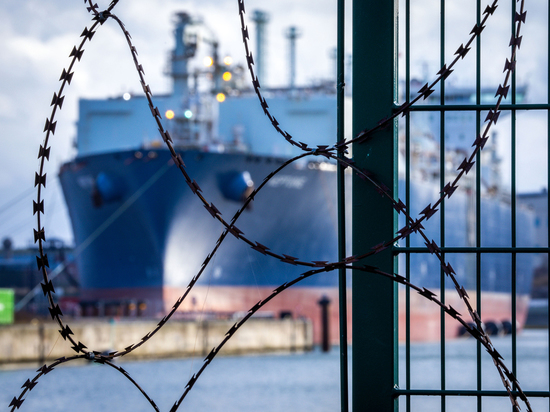Europe dealt a new blow to the export of liquefied gas from Russia: who will lose more
[ad_1]

Lose, as usual, both sides
The EU came up with a new measure against the export of Russian hydrocarbons, and without imposing official sanctions. In Brussels, according to Bloomberg, they are discussing the idea that allows EU countries to prohibit exporters from our country from agreeing in advance on the supply of liquefied natural gas (LNG) to their processing terminals. If such a decision is made, it will, of course, hit domestic producers. But the main damage is likely to be felt by European consumers, who, due to reduced supply, will have to buy Middle Eastern and American fuel at exorbitant prices.
The initiative to give EU members the right to prohibit Russian exporters from reserving in advance the capacities of the European infrastructure necessary for LNG supplies comes from Finland, Estonia, Latvia, Lithuania and Poland, which for some time now have refused to directly import energy resources from our country. New restrictions must be approved by the European Parliament, however, since such measures are not included in the general anti-Russian sanctions packages, their approval does not require unanimous approval. As Bloomberg notes, although the supply of pipeline gas from Russia after the sabotage at the Nord Stream has been reduced to a minimum, Moscow is looking for new ways to maintain its share (33-37%) in the energy balance of the continent. The supply of liquefied fuel, which has not yet been subject to sanctions, looks extremely attractive for another torpedo from our enemies from the EU.
True, the new European restriction does not yet look intimidating for the Russian energy sector. The share of LNG produced at domestic plants and supplied to the European market is relatively small. According to the European research organization Bruegel, the share of this type of fuel in Europe’s consumption has increased from 20% to 35%, while the volume of Russian pipeline “blue fuel” has decreased from 40% to 15%. The export of liquefied gas from our country, of course, has grown: the new polar plant Yamal LNG increased supplies to the EU by about 14%, and about 700 thousand tons more came from another domestic project, Cryogas-Vysotsk, located on the shores of the Baltic Sea. According to the international analytical system Kpler, only “gold” in this struggle for the client was received by American companies that provided at least 41% of total consumption.
“Obviously, the next restrictive measures being developed by a number of members of the European Union against the saturation of the continental market with Russian hydrocarbons will have a negative impact on domestic producers of the now popular liquefied fuel,” said Sergei Pravosudov, Director General of the National Energy Institute. From January to September 2022, the EU spent about 12.5 billion euros to buy Russian LNG. This is five times more than a year earlier. Disconnection from such a sales market runs the risk of freezing the investment projects of Russian mining holdings in relation to liquefied gas for a long time.
Meanwhile, replacing Russian pipeline supplies with liquefied gas is Europe’s long-held dream. To accomplish this task, several components are required. First, it is necessary to build new terminals for receiving LNG, increasing the number of stations from 27 to 35 units. Only then will the continent’s capacity for regasification (transformation of hydrocarbons from a liquid state into a gaseous state) grow from 180 billion to 227 billion cubic meters. It is these volumes that Europe will need to pass the next heating season. “It will be necessary to invest up to $1 billion in the creation of each processing station,” believes Sergey Suverov, investment strategist at Arikacapital, “In addition, it will be necessary to choose places to create the necessary infrastructure, which will be the subject of difficult technical coordination between various EU members.”
Australia currently produces the most LNG in the world. It is followed by Qatar and the United States. LPG prices for these exporters continue to be high. The pace of development of the Russian LNG sector in Russia is impressive: back in 2010, only 10 million tons of such fuel were produced in our country, and now it is 17 million. However, approximately 70% of contracts for the supply of LNG are concluded on a long-term basis, which implies the reservation of graphics. The mobile tanker fleet, consisting of specialized vessels, is formed taking into account the mining and processing capabilities of suppliers, as well as their international intermediaries, who do not always operate under Russian jurisdiction.
According to Suverov, the introduction of a ban on certain operations with restrictions on freight or the use of land infrastructure threatens to lead to lengthy legal red tape, which will no longer be dealt with by domestic players in the commodity market, but by international firms. Ordinary European consumers will have to pay, for whom electricity prices in some EU countries have already increased from 10-30 to 100-150 euros per megawatt-hour.
[ad_2]
Source link






